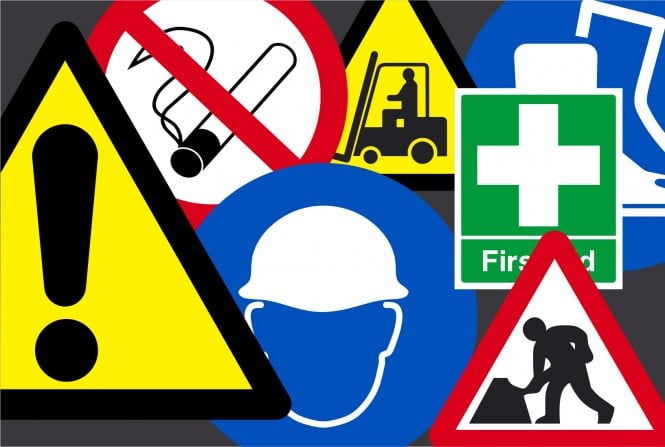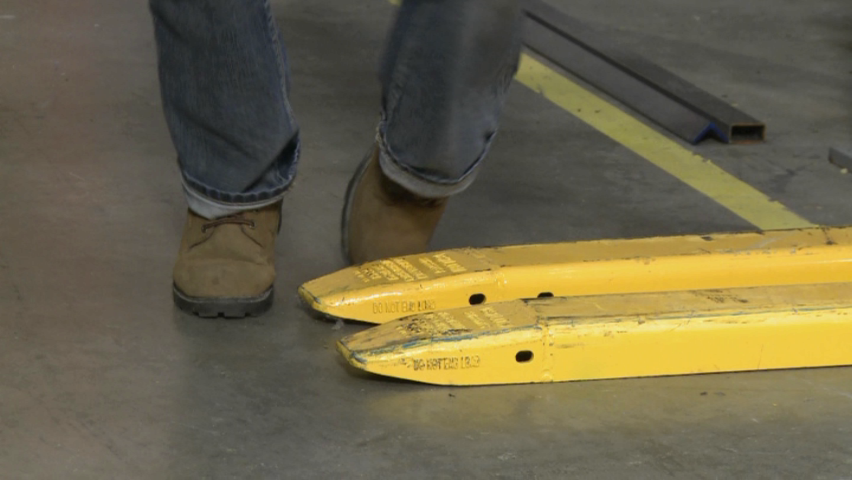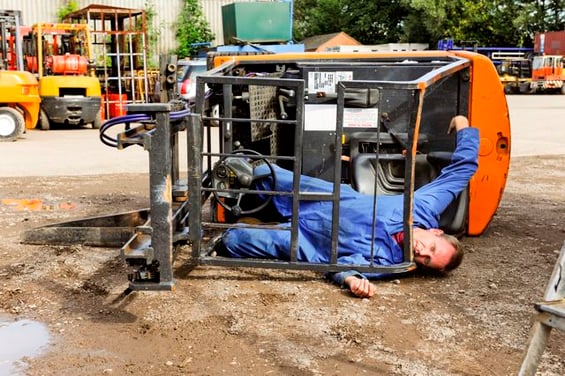Six Tips For Workplace Health & Safety - What Are Your Obligations?

Workplace Health and Safety (WHS), often referred to as Occupational Health and Safety (OH&S) involves the assessment and migration of risks that may impact the health, safety or welfare of those in your workplace.
This may include the health and safety of your customers, employees, visitors, contractors, volunteers and suppliers. As a business owner there are legal requirements that you must comply with to ensure your workplace meets WHS obligations.
1. Provide safe work premises
Worn and exposed wires such as old extension cords, leaking flammable fluids and gases, and running electrical cords under carpet are all mistakes to avoid in warehouses. When constructing a new warehouse, fire protection must be considered at the beginning of the design process rather than after it has been built or after the electrical work has been done.
Attention tends to be paid to active systems, such as alarms and fire extinguishers, but by adopting an integrated approach that consider passive systems at the design stage, a warehouse can be better protected if a fire occurs.
2. Assess risks and implement appropriate measures for controlling them Slipping may appear to be a very minor worry to begin with but is a very common warehouse hazard that can be easily prevented by ensuring the warehouse does not have any of the following:
Slipping may appear to be a very minor worry to begin with but is a very common warehouse hazard that can be easily prevented by ensuring the warehouse does not have any of the following:
- loose material, such as sawdust, and loose flooring/carpeting;
- unnecessary steps or ridges;
- uneven walking surfaces;
- poorly lit areas;
- clutter.
Technicians and trades workers, machinery operators and drivers, and labourers made up 31% of the workforce, but contributed 58% of total cases and 57% of total costs.
3. Ensure safe use and handling of goods and substances
Harsh chemicals, such as asbestos, are a serious workplace hazard, as is carbon monoxide fumes emitted by vehicles such as forklifts. Warehouses need to be well-ventilated so that fumes can disperse, and levels of noxious gases and fumes should be monitored.
In addition, a number of hazards are posed when storing packaged dangerous substances if there is a lack of awareness of the properties of these substances and/or inappropriate storage conditions with respect to the hazards of the substances. Different types of dangerous substances should be assessed when considering a risk control strategy to ensure there is sufficient segregation. Furthermore, dangerous substances should only be received into a chemical warehouse by someone who understands all the risks they pose, in relation to their physical and chemical properties and quantities.
Without proper training for all warehouse operators, not only will a warehouse fail to perform at its full potential but it will pose serious risks to all those in it.
4. Provide and maintain safe machinery and materials
According to the Occupational Safety & Health Administration (OSHA) weekly fatality/catastrophe report, two workers are crushed to death every month on the job (this figure is for October 2014 to October 2015 and not limited to warehouse workers' deaths).
It can become dangerous if you underestimate the potential dangers of a machine, such as a forklift. All operators must understand the potential hazards of all the machines present in the warehouse, regardless of how many years they have been working with the equipment, and undertake periodic training to keep up to date with the latest recommendations and remain cautious while using any machine.
$61.8 billion the cost of work-related injury and disease to the Australian economy
77% of work-related injury and disease costs are borne by workers
Accidents can be prevented by following the specific instructions provided for a piece of equipment; machines with moving parts are a common workplace hazard as they can cause the most serious permanent injuries when used improperly. No amount of experience can fully eradicate accidents - and actually, it has been known that the inexperienced staff members may take a more careful approach to machinery (going through all the checks) as the more experienced staff members think that they no longer need to do checks - and that is when accidents can happen. You may be surprised at how many accidents are caused by very capable and knowledgeable staff members due to complacency.

Effective employee training, well maintained machinery and systematic traffic management will reduce the risks, as opposed to unsafe methods and workplaces inflicting schedules on operators that are too demanding. Supervisors need to ensure that the piece of equipment in use, suits the specific workplace conditions and task in hand in order to avoid a potentially fatal incident.
DOWNLOAD OUR GUIDE TO OPTIMISING FORKLIFT SAFETY HERE >
5. Assess workplace layout and provide safe systems of work Warehouse managers need to analyze the reasons for past accidents rather than simply recording their outcome.
Warehouse managers need to analyze the reasons for past accidents rather than simply recording their outcome.
Knowing a forklift driver suffered a broken arm does not tell the manager how to correct the operating procedures that caused an injury, however if the manager learns that the injury occurred when the driver's arm was outside the forklift's cage and he turned a corner too sharply, the need for driver re-training relating to procedure, speed and spatial awareness and the layout of the warehouse could also come into question.
Lessons need to be learned from every incident, no matter how minor, in order to prevent further injuries.
6. Provide a suitable working environment and facilities
Every warehouse needs to be designed and maintained in a way that provides unobstructed exiting from any part of the building at all times, even if repairs or maintenance is being carried out to the building.
When a warehouse is occupied, there should be no locks in place that could prevent free escape from the inside. Exits must be marked by clearly visible signs in languages that can be understood by everyone working in the warehouse. This includes indicating the pathway to the exit as well as the exits themselves.
Warehouse managers should take a walk through their facility to ensure they can see an exit sign at all times and that there is no ambiguity - employees who are unfamiliar with the warehouse layout or reacting in haste to an emergency could easily confuse a closet or bathroom door with an exit, for example, especially if visibility is impaired due to a fire. All exit routes need to be free of explosive or highly flammable furnishings, and should not lead employees along a path that runs near hazardous areas.
DOWNLOAD OUR GUIDE TO OPTIMISING FORKLIFT SAFETY HERE >
For the purpose of perspective, lets take a look at one of the most expensive accidents in world history, in terms of property loss and measured in dollars.
Chernobyl, 1986 ($200 Billion - human error).
When: April 26th, 1986
The world witnessed the most expensive accident in history. The Chernobyl disaster, widely considered to have been the worst nuclear power plant accident in history, and is one of the level 7 event (the maximum classification) on the International Nuclear Event Scale. The accident was officially attributed to power plant operators who violated plant procedures and were ignorant of the safety requirements needed.
Chernobyl accident was considered the greatest socio-economic catastrophe recorded history. 50% part of Ukraine is influenced and contaminated. 200,000 people evacuated and transferred, while 1.7 million people directly affected by the disaster. The death victims attributed to Chernobyl, including those who died from cancer after many years, about 125,000. Nobody knows exactly how much the world’s worst nuclear accident cost. $200 billion is considered a fairly conservative figure including cleaning, transmigration, and the compensation of victims. The cost of a new steel shelter for the Chernobyl nuclear plant will cost $2 billion alone.





